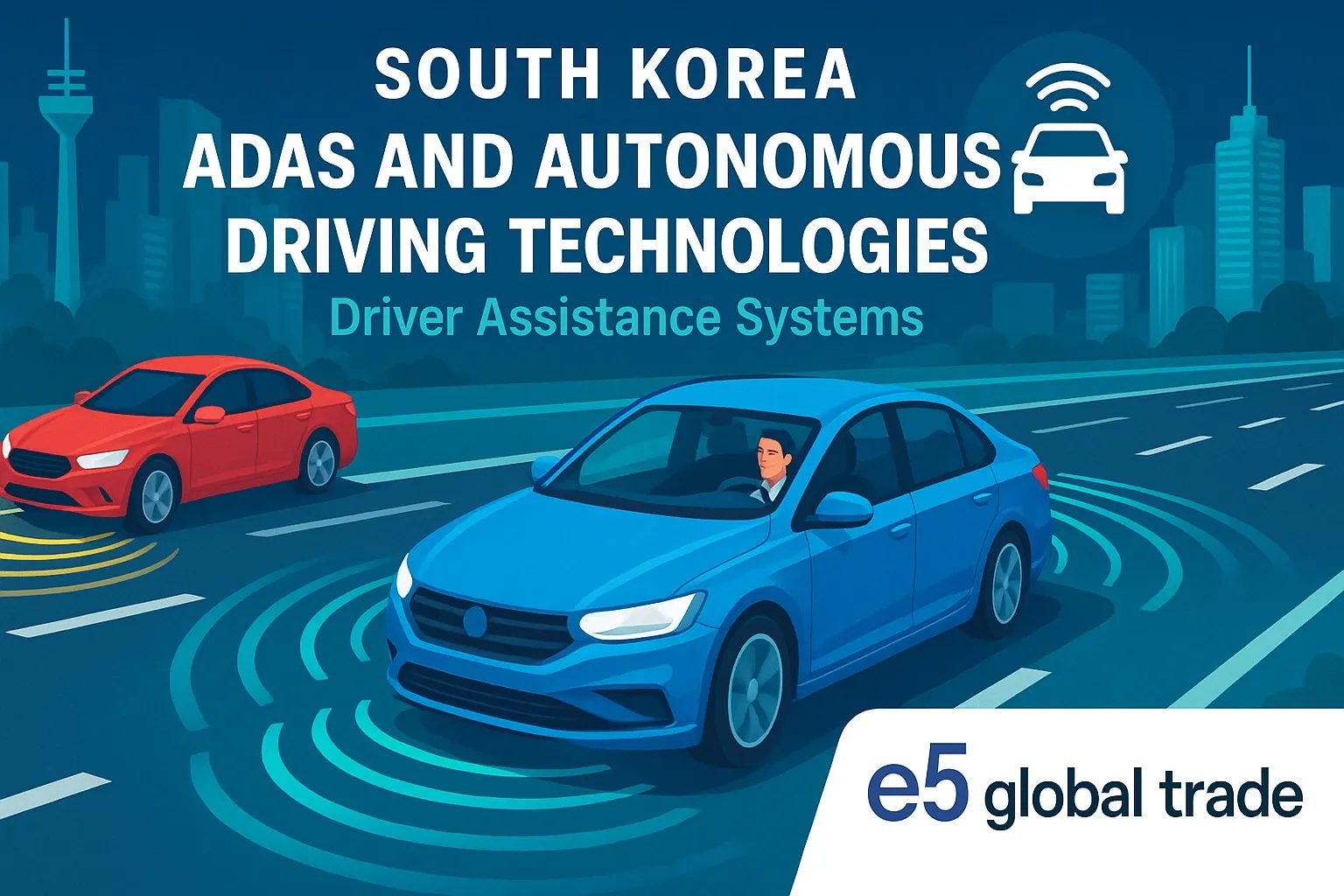In recent years, South Korea has gained significant momentum in this area, where automotive and artificial intelligence technologies intersect, by targeting not only its local market but also global competition. Major automotive manufacturers, tech giants, and government policies are supporting this transformation. ADAS systems are now standard in nearly all new vehicles, while autonomous driving technologies are rapidly transitioning from the testing phase to commercial use. Hyundai Motor Group is the most prominent player in this field. Its "Hyundai SmartSense" driver assistance suite, offered through Hyundai, Kia, and its luxury brand Genesis, now comes standard in many models. This system supports the driver both actively and passively. For example, it automatically brakes when the vehicle is too close to an object in front, warns of lane departures and attempts to correct steering, and even integrates with navigation data to automatically adjust speed and lane on the highway. Advanced versions, particularly Highway Driving Assist 2 (HDA2), allow the driver to take their hands off the steering wheel and pedals for extended periods, thus embodying the first steps toward autonomous driving. Beyond these developments at the ADAS level, South Korea is also rapidly advancing toward fully autonomous driving, or driverless vehicles. Hyundai operates globally in this area through a joint venture called Motional. Motional has already begun providing robotaxi services in Las Vegas in partnership with Lyft. The same company is expected to launch a similar service in South Korea, particularly in major cities like Seoul, in 2025-2026. These vehicles will be Level 4 classified, meaning they can operate completely driverless under certain conditions and geographies. Tech giants are not remaining passive in this field either. Samsung is developing both hardware and software solutions in the automotive electronics sector through its acquisition of Harman. It aims to domestically produce many critical components, from in-car processors to sensor fusion systems. LG Electronics, meanwhile, holds a significant place in the automotive supply chain with its ADAS cameras, radar systems, and AI-based sensing software. Naver, meanwhile, is developing its own autonomous driving software and is working on both robotaxis and autonomous delivery vehicles. The limited-field tests it launched in Seoul in 2023 were a significant step in demonstrating the adaptability of this technology to urban transportation. Of course, these technological advancements alone are not enough. The South Korean government is also supporting this transformation legally and infrastructurally. The "Autonomous Vehicles Law," which went into effect in 2020, legalized the use of Level 3 vehicles on the roads. Preparations for Level 4 are underway, with a target of 2027. Special test tracks have been established in major cities such as Seoul, Busan, and Daejeon. Furthermore, the intensive deployment of 5G infrastructure and the development of V2X technology—which allows vehicles to communicate with each other, traffic lights, roads, and even pedestrians—play a critical role in the safe and intelligent integration of autonomous vehicles. There is also widespread consumer acceptance. Approximately 80% of new vehicle buyers opt for ADAS features. Younger generations, in particular, are open to technology and tend to trust autonomous driving features. Of course, there are still details to be resolved regarding insurance, accident liability, and data privacy, but the government is gradually implementing these regulations. Globally, South Korea is considered the third-largest player, following only the US and China. Thanks to Hyundai and Kia, the integration rate of ADAS systems into vehicles is among the highest worldwide. Strong foundations in semiconductor, artificial intelligence, and telecommunications infrastructure provide significant advantages for the development of autonomous driving technologies. The targets for the next five to ten years are quite ambitious: Level 3 autonomous vehicles are expected to enter mass production in 2025, robotaxi services to begin in 2026, Level 4 vehicles to be on public roads in certain regions in 2027, and one in every two newly sold vehicles to have at least Level 3 autonomous driving capabilities by 2030. In short, South Korea aims to be at the center of the autonomous driving revolution in terms of technology, production, and legal infrastructure. In this journey, it aims not only to sell cars but also to build smart transportation ecosystems. It will come as no surprise that South Korea will be one of the world's leading countries in this field by the 2030s.
E5 Global Trade | Yazılar
South Korean Driver Assistance Systems: ADAS and Autonomous Driving Technologies
Küresel Haber Ajansı
·


